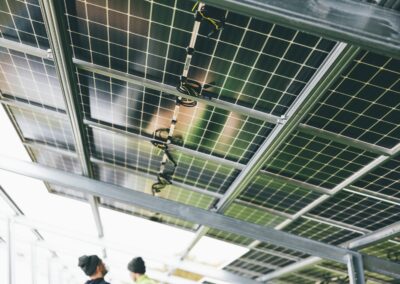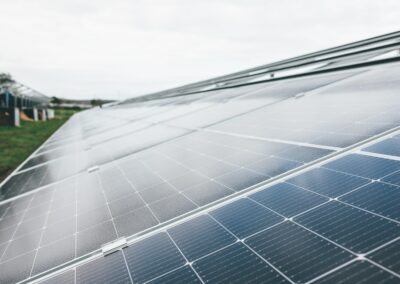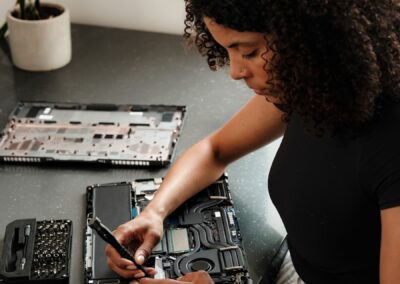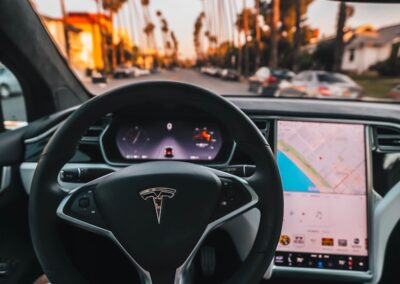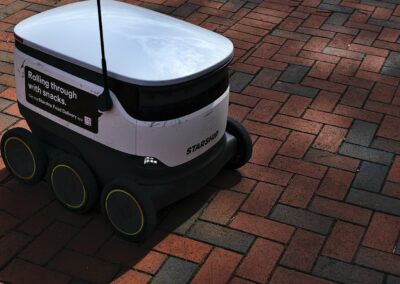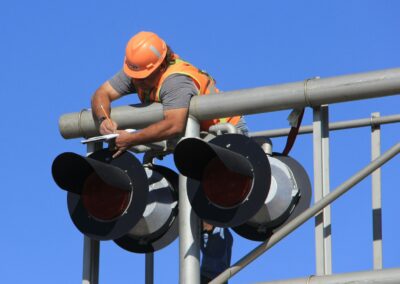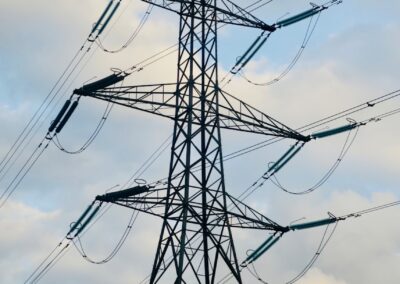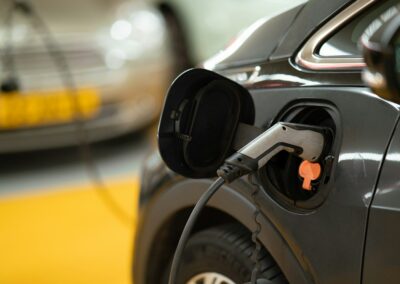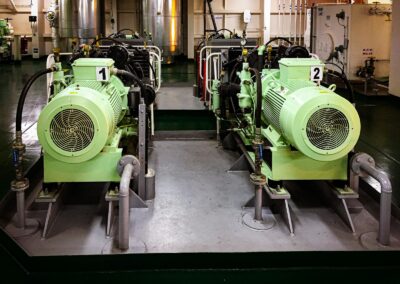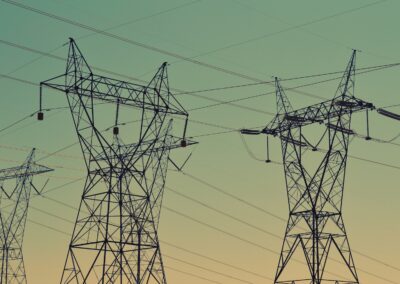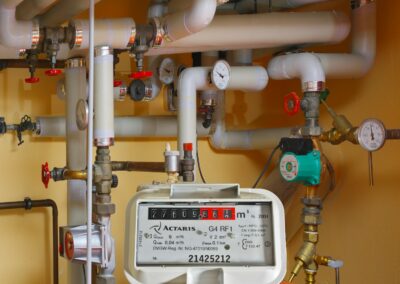Harnessing Digital Twins to Revolutionize Energy Systems
The Evolution of Digital Twins in Energy Management
The future potential of digital twins in optimizing energy systems includes the development of fully autonomous energy management solutions. Digital twins, which create a virtual replica of physical assets, have already demonstrated their transformative impact on various industries. In the context of energy systems, digital twins offer unprecedented opportunities to enhance efficiency, reliability, and sustainability.
By leveraging digital twins, energy operators can monitor and control energy infrastructure in real-time. These virtual models simulate the behavior of energy systems under different conditions, allowing operators to predict and address potential issues before they escalate. In regions like Saudi Arabia and the UAE, where energy sustainability is a key priority, digital twins can play a critical role in achieving national energy goals.
The integration of digital twins with artificial intelligence (AI) and machine learning (ML) technologies further amplifies their capabilities. AI-driven digital twins can analyze vast amounts of data, identify patterns, and optimize energy management processes autonomously. This evolution towards autonomous energy management is not only a technological advancement but also a strategic imperative for cities like Riyadh and Dubai, which are leading the way in smart city initiatives.
Autonomous Energy Management: The Next Frontier
The concept of autonomous energy management involves the use of digital twins to create self-regulating energy systems. These systems can operate independently, making real-time decisions to optimize energy production, distribution, and consumption. This level of autonomy is particularly beneficial for renewable energy sources, such as solar and wind, which are inherently variable.
In the UAE, where solar energy is a significant part of the energy mix, digital twins can ensure that solar plants operate at peak efficiency. By continuously monitoring environmental conditions and system performance, digital twins can adjust the operation of solar panels to maximize energy output. This not only enhances the reliability of solar energy but also reduces operational costs through predictive maintenance and optimized performance.
Saudi Arabia, with its ambitious Vision 2030 initiative, aims to diversify its energy portfolio and reduce dependence on fossil fuels. Autonomous energy management, powered by digital twins, can support this vision by enabling the integration of renewable energy sources into the national grid. Digital twins can simulate various scenarios, from peak demand periods to adverse weather conditions, ensuring a stable and resilient energy supply.
Implementing Digital Twins in Modern Energy Systems
The implementation of digital twins in modern energy systems requires a robust infrastructure of sensors, IoT devices, and data analytics platforms. These components collect and process real-time data from energy assets, feeding it into the digital twin for analysis and optimization. This setup enables a dynamic and responsive energy management system that can adapt to changing conditions.
In cities like Riyadh and Dubai, which are at the forefront of smart city development, the deployment of digital twins can enhance urban energy systems. Smart grids, supported by digital twins, can balance supply and demand more effectively, reducing energy wastage and improving efficiency. Moreover, the integration of blockchain technology can ensure data security and transparency, building trust in the digital twin framework.
The journey towards autonomous energy management also involves addressing challenges related to data integration and interoperability. Energy systems are often composed of diverse assets from different manufacturers, each with its own data protocols. Standardizing these protocols and ensuring seamless data flow across the system is crucial for the effective functioning of digital twins.
The Strategic Impact of Digital Twins on Business and Sustainability
Business Benefits of Autonomous Energy Management
For business executives, mid-level managers, and entrepreneurs, the adoption of digital twins in energy management offers significant benefits. Autonomous energy management can lead to substantial cost savings by reducing energy consumption and minimizing downtime. By optimizing the performance of energy assets, businesses can achieve higher operational efficiency and lower maintenance costs.
In the context of Saudi Arabia and the UAE, where energy-intensive industries such as petrochemicals and manufacturing are prevalent, digital twins can drive competitive advantage. Businesses that leverage autonomous energy management can reduce their carbon footprint, align with national sustainability goals, and enhance their corporate reputation. This strategic alignment with environmental objectives is increasingly important in attracting investors and customers who prioritize sustainability.
Furthermore, digital twins enable businesses to harness the power of data analytics and AI for strategic decision-making. By providing real-time insights into energy usage patterns, digital twins can inform investment decisions, capacity planning, and risk management. This data-driven approach empowers business leaders to optimize resource allocation and improve overall business performance.
Sustainability and Environmental Impact
The environmental impact of autonomous energy management through digital twins cannot be overstated. By optimizing energy systems, digital twins contribute to the reduction of greenhouse gas emissions and the transition to renewable energy sources. This aligns with global sustainability initiatives and supports the efforts of countries like Saudi Arabia and the UAE to combat climate change.
In Dubai, which has set ambitious targets for renewable energy adoption, digital twins can accelerate the deployment of solar and wind projects. By ensuring that these projects operate at maximum efficiency, digital twins help achieve energy targets faster and more cost-effectively. This contributes to the city’s vision of becoming a global leader in sustainability and smart city innovation.
Similarly, in Saudi Arabia, digital twins can support the development of large-scale renewable energy projects, such as the NEOM megacity. NEOM aims to be a model of sustainability and innovation, and the use of digital twins for autonomous energy management is integral to this vision. By creating a resilient and adaptive energy system, digital twins can help NEOM achieve its sustainability goals and set a benchmark for future smart cities.
Conclusion
The future of energy systems lies in the integration of digital twins for autonomous energy management. This technology offers transformative benefits for efficiency, reliability, and sustainability. For business executives, mid-level managers, and entrepreneurs, the adoption of digital twins is a strategic imperative that can drive cost savings, operational efficiency, and environmental impact.
In regions like Saudi Arabia and the UAE, where renewable energy is a strategic priority, digital twins can support the transition to a sustainable energy future. By harnessing the power of AI, IoT, and blockchain, digital twins enable autonomous energy systems that are adaptive, resilient, and efficient. As we move towards a more sustainable world, the role of digital twins in energy management will continue to grow, offering new opportunities for innovation and growth.
#DigitalTwins #AutonomousEnergyManagement #RenewableEnergy #SmartGrids #SaudiArabia #UAE #Riyadh #Dubai #AI #Blockchain #Sustainability #BusinessSuccess #LeadershipSkills #ProjectManagement


